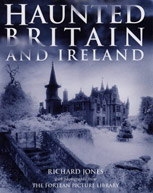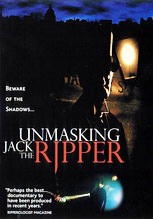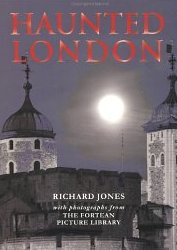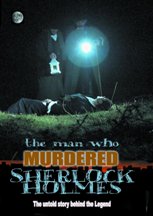THE POSTHUMOUS ADVENTURES OF KATHERINE PARR
SUDELEY CASTLE
TUDOR INTRIGUE AND RESTLESS WRAITHS
Sudeley Castle, Nr. Winchcombe, Gloucestershire.
In 1441 Ralph Boteler, having been created Baron Sudeley and Lord Chamberlain of the King’s Household, set about building a castle that would reflect his newfound status.
SUDELEY CASTLE THOU ART THE TRAITOR
Twenty years later, when Edward 1V ascended the throne, he cast covetous eyes upon the magnificent pile and had the Lancastrian Boteler arrested on trumped up charges of treason, and confiscated his grand home. "Sudeley Castle, thou art the traitor, not I," Boteler is reputed to have observed as he was led away.
RICHARD 111 AT SUDELEY CASTLE
The castle was given to the King’s brother, the Duke of Gloucester, later the infamous Richard 111 and, following his death at the Battle of Bosworth in 1485, was awarded to Jasper Tudor, the uncle the uncle of the new King, Henry V11.
LORD SEYMOUR OF SUDELEY
In 1537, when Jane Seymour bore Henry V111 his longed for son, Edward, the King showed his gratitude by creating her younger brother, Thomas, Lord Seymour of Sudeley.
The unfortunate Jane, however, died shortly after giving birth, and Henry V111 would marry a further three times, his last wife being Katherine Parr, who had already been courted by Thomas Seymour.
SEYMOUR PROPOSES TO PRINCESS ELIZABETH
Following Henry’s death in 1547, Seymour proposed marriage to Henry's daughter - the fifteen-year-old Princess, Elizabeth.
HE MARRIES THE KING'S WIDOW
Ever the ambitious Pragmatist, when she turned him down, he re-kindled his affair with her stepmother and, less than a month after being widowed, Queen Katherine Parr had accepted his marriage proposal.
KATHERINE PARR DIES AT SUDELEY
The newly weds moved into Sudeley Castle, where on 30th August 1548, Katherine gave birth to daughter, Mary.
The couple were overjoyed. But their happiness was to prove short lived for, a week later, Katherine died of puerperal fever and was buried in Sudeley Castle’s chapel of St Mary, where one of her chief mourners was her Lady in Waiting, the ill-fated Lady Jane Grey.
THE QUEEN'S POSTHUMOUS INDIGNITIES
Queen Katherine Parr's body was destined not to rest peacefully at Sudeley Castle. By the time of the Civil War in the 17th Century her grave lay forgotten and neglected. Then, in 1782, a farmer accidentally discovered it, and opening the lead casket, found the body intact and "uncorrupted." Moments later though, it crumbled into dust and the terrified man hastily reburied her.
KATHERINE FINALLY FINDS PEACE
Katherine's remains were finally re-interred in the new chapel at Sudeley Castle in 1817, and there she now lies beneath a splendid Victorian effigy.
As for her daughter, Mary, she simply disappeared from the pages of history, and her fate is unknown.
KATHERINE'S GHOST HAUNTS SUDELEY CASTLE
Katherine’s ghost is still said to wander the cosy corridors of Sudeley Castle, and there have been frequent reports of a tall lady in a green dress seen around the castle nursery. Her appearances are often presaged by the faint smell of apple-scented perfume, and occasionally accompanied by the heart-rending sobs of a crying child.
THOMAS WOOS THE PRINCESS ELIZABETH AGAIN
Following Katherine's death, her husband, Thomas Seymour, refused to allow a little thing like widowhood to stand in the way of his ambitions. He promptly renewed his wooing of Princes Elizabeth and, when she rebuffed him, he made similar assignations to her half-sister, Mary!
Having failed to win the affections of the Princesses, he attempted instead to win the confidence of the young King, Edward V1, and began strenuous efforts to turn him against his Protector, Edward Seymour, Duke of Somerset, and Thomas Seymour’s own brother. When his plans to marry Lady Jane Grey (who was the granddaughter of Henry V111’s sister), to Edward V1 failed, he seriously considered kidnapping the King.
A MAN OF MUCH WIT BUT VERY LITTLE JUDGEMENT
But eventually his lust for power was to prove his downfall. He was arrested on charges of treason, found guilty and executed, his death warrant being signed by his own brother.
Learning of Thomas Seymour’s death, Princess Elizabeth noted, “This day died a man of much wit, and very little judgement”.
LADY JANE GREY
Sudeley Castle then passed into the hands of the Marquess of Northumberland and it was he who persuaded the dying Edward V1 to name Lady Jane Grey as his successor, in order that a Protestant throne might be maintained.
But the plot failed, Lady Jane Grey was executed, and Northampton’s lands were confiscated.
THE FALL AND RISE OF SUDELEY CASTLE
Sudeley’s days of glory were effectively over and, after the Civil War it was slighted and fell into ruin.
Restored to its former glory in the 19th century, Sudeley Castle is now the home of Lord and Lady Ashcombe and the Dent-Brockleshurst family.
THE GHOSTLY HOUSEKEEPER
Another restless wraith that haunts Sudeley is that of a 19th century housekeeper whose name was Janet. This formidable Scottish lady took the virtues of her young housemaids very seriously indeed, and each night would sit at the top of the stairs leading to their sleeping quarters, and armed with a feather duster, would fend off the amorous approaches of the young menservants.
Death has, apparently, not loosed her grip on her domain, and several people ascending the stairs have reported encounters with her.
A teenage girl, who one day strayed from her tour group, came face to face with her on the upstairs landing. She became hysterical when the stern faced apparition began waving her feather duster towards her in spectral rebuke.







